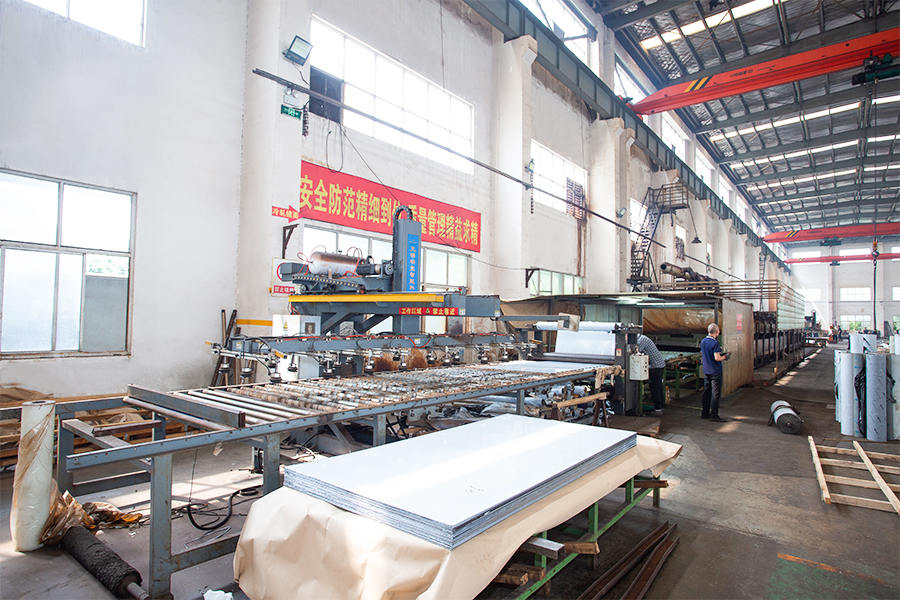In the world of manufacturing and engineering, the materials used in the production of parts and structures play a crucial role in ensuring the performance and longevity of the final product. One such material that is widely used across various industries is cold rolled flat plate. Known for its excellent surface finish, high strength, and versatility, cold rolled flat plate is essential in numerous applications, from automotive and construction to aerospace and electronics.
Cold rolled flat plates are typically used in applications where precision and a smooth surface finish are critical. These plates are produced in various thicknesses, widths, and lengths, and can be further processed or cut to meet specific requirements. Cold rolled steel is also highly malleable, which allows it to be shaped into various forms without sacrificing strength or durability.
The cold rolling process begins with hot rolled steel, which is first cleaned and pickled to remove any scale or oxide that may have formed during hot rolling. The steel is then passed through a series of rollers that gradually reduce its thickness. This process not only makes the steel thinner but also increases its strength through work hardening.
The key steps involved in the cold rolling process include:
Pickling: The hot-rolled steel is cleaned using acid to remove any oxides and impurities from the surface.
Rolling: The cleaned steel is passed through rollers that apply pressure to reduce its thickness while shaping the material.

Annealing: In some cases, the steel is heated in an oven to soften it after cold rolling. This step, known as annealing, helps restore some of the ductility lost during the cold rolling process.
Finishing: After the desired thickness is achieved, the steel is finished with processes such as polishing, coating, or additional treatment to enhance its appearance and performance.
Properties of Cold Rolled Flat Plate
Cold rolled flat plates are known for several distinct properties that make them suitable for a wide range of applications:
Smooth Surface Finish: One of the key advantages of cold rolled flat plate is its smooth, high-quality surface finish. This makes it ideal for applications that require aesthetic appeal or precise measurements, such as in the automotive and electronics industries.
High Strength: Cold rolling increases the tensile strength of the material due to work hardening. This makes cold rolled flat plates stronger and more resistant to deformation compared to hot rolled steel.
Dimensional Accuracy: Cold rolled plates are known for their precise dimensions, which makes them suitable for applications that require tight tolerances. The ability to control thickness during cold rolling ensures that the material meets specific requirements for various industrial applications.
Enhanced Durability: The additional processing of cold rolling results in a material with enhanced strength and resistance to wear, which contributes to its durability in demanding environments.
Formability: Despite being stronger than hot rolled steel, cold rolled flat plates are still malleable enough to be formed into various shapes and sizes. This makes them highly versatile and adaptable for different manufacturing processes.
Better Surface Quality for Coating: The smooth and clean surface of cold rolled flat plates allows for better adhesion of coatings such as paint, galvanizing, or powder coatings. This property is essential for industries that require corrosion-resistant or aesthetically appealing finishes.
Applications of Cold Rolled Flat Plate
Cold rolled flat plates are used across a wide range of industries, thanks to their superior strength, finish, and precision. Some of the most common applications include:
Automotive Industry: Cold rolled steel is widely used in the automotive industry for manufacturing body panels, structural components, and trim parts. The precision and surface quality of cold rolled flat plates make them ideal for automotive applications where both appearance and strength are essential.
Construction and Architecture: In construction, cold rolled flat plates are used for structural components, roofing, cladding, and framing. Their ability to resist deformation and corrosion under harsh environmental conditions makes them a reliable material for building applications.
Aerospace: The aerospace industry demands materials that are lightweight, strong, and durable. Cold rolled flat plates are used in the manufacture of aircraft components, including fuselage panels, wings, and engine parts, where high strength-to-weight ratios and precision are crucial.
Electronics: Cold rolled flat plates are used in electronics for applications such as electrical enclosures, circuit boards, and other precision components. The smooth finish and dimensional accuracy make them an excellent choice for devices that require high performance and reliability.
Home Appliances: Many household appliances, including refrigerators, washing machines, and ovens, use cold rolled flat plates in their construction. The material’s durability, corrosion resistance, and formability make it a popular choice for producing appliance parts that need to withstand wear and tear.
Manufacturing and Machinery: Cold rolled flat plates are frequently used to create machine parts, tools, and components that require high precision and strength. The ability to produce parts with tight tolerances and smooth surfaces makes cold rolled steel an essential material for the manufacturing of industrial machinery.
Improved Strength-to-Weight Ratio: Cold rolled flat plates are stronger than their hot rolled counterparts, making them ideal for applications where strength and weight are a concern. This advantage is particularly beneficial in industries such as automotive and aerospace, where weight reduction is often a key design objective.
Cost Efficiency: Although cold rolling is more energy-intensive than hot rolling, the improved properties and surface finish of cold rolled flat plates can reduce the need for additional finishing or processing, leading to long-term cost savings.


 English
English русский
русский عربى
عربى 中文简体
中文简体
